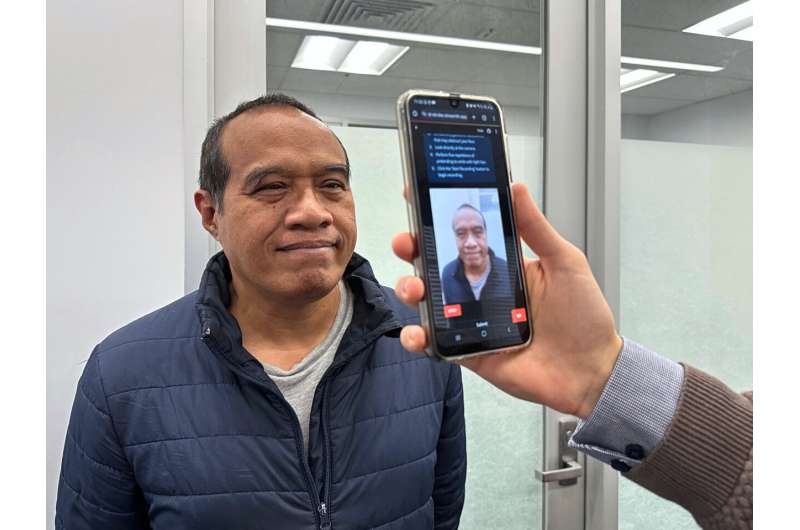This article has been reviewed according to Science X's editorial process and policies. Editors have highlighted the following attributes while ensuring the content's credibility:
fact-checked
trusted source
proofread
Engineers develop face screening tool that detects stroke in seconds

A new smartphone face-screening tool could help paramedics to identify stroke in seconds—much sooner and more accurately than is possible with current technologies.
Strokes, which affect millions of people globally, occur when the blood supply to part of the brain is interrupted or reduced, which prevent brain tissue from getting oxygen and nutrients. A few minutes of delay can result in permanent damage to the brain cells.
A team of biomedical engineers at RMIT University developed the AI capabilities behind the software technology and has published their results in Computer Methods and Programs in Biomedicine.
Ph.D. scholar Guilherme Camargo de Oliveira, from RMIT and São Paulo State University, led this research under the supervision of team leader Professor Dinesh Kumar.
"Early detection of stroke is critical, as prompt treatment can significantly enhance recovery outcomes, reduce the risk of long-term disability, and save lives," said Kumar from RMIT's School of Engineering. "We have developed a simple smartphone tool that paramedics can use to instantly determine whether a patient is post-stroke and then inform the hospital before the ambulance leaves the patient's house."
The smartphone tool, which has an accuracy rating of 82% for detecting stroke, would not replace comprehensive clinical diagnostic tests for stroke, but could help identify people needing treatment much sooner.
"Our face-screening tool has a success rate for detecting stroke that compares favorably to paramedics," Kumar said.
Strokes can be difficult to spot
Symptoms of stroke include confusion, partial or complete loss of movement control, speech impairments and diminished facial expressions.
"Studies indicate that nearly 13% of strokes are missed in emergency departments and at community hospitals, while 65% of patients without a documented neurological examination experience undiagnosed stroke," Kumar said.
"Many times, the signs are very subtle. On top of that, if first responders are working with people who are not their race or gender—most notably women and people of color—it is more likely that the signs will be missed.
"This rate can be even higher in smaller regional centers. Given that many strokes occur at home and initial care is often provided by first responders in non-ideal conditions, there is an urgent need for real-time, user-friendly diagnostic tools."
How the technology works
The novel AI-driven technology uses the power of facial expression recognition to detect stroke by analyzing facial symmetry and specific muscle movements, known as action units.
The Facial Action Coding System (FACS), initially developed in the 1970s, categorizes facial movements by the contraction or relaxation of facial muscles, providing a detailed framework for analyzing facial expressions.
"One of the key parameters that affects people with stroke is that their facial muscles typically become unilateral, so one side of the face behaves differently from the other side of the face," de Oliveira said.
"We've got the AI tools and the image processing tools that can detect whether there is any change in the asymmetry of the smile—that is the key to detection in our case."
Video recordings of facial expression examinations of 14 people with post-stroke and 11 healthy controls were used in this study.
Next steps
The team plan to develop the smartphone tool into an App in collaboration with health care providers so that it will be able to detect other neurological conditions that affect facial expressions.
"We want to be as sensitive and specific as possible. We are now working towards an AI tool with additional data and where we are going to be considering other diseases as well," Kumar said.
"Collaboration with health care providers will be crucial to integrate this App into existing emergency response protocols, providing paramedics with an effective means of early stroke detection."
The researchers from RMIT partnered with São Paulo State University in Brazil on this research.
More information: Guilherme C. Oliveira et al, Facial expressions to identify post-stroke: A pilot study, Computer Methods and Programs in Biomedicine (2024). DOI: 10.1016/j.cmpb.2024.108195





















